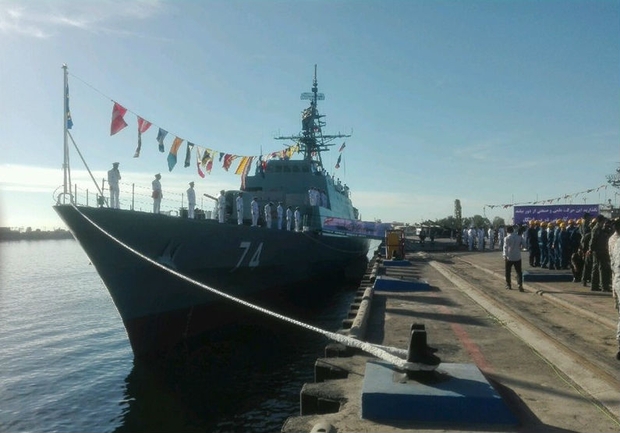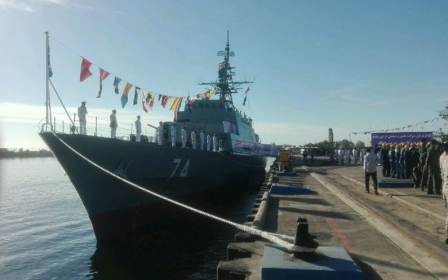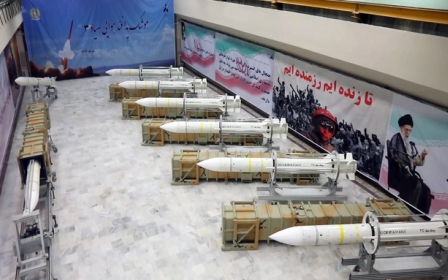Iran to deploy warships in Atlantic to counter US influence in the Gulf

The Iranian navy will deploy warships to the Atlantic in March, a top commander has said, as the Islamic Republic seeks to increase the operating range of its naval forces to the backyard of the United States.
Iran sees the presence of US aircraft carriers in the Gulf as a security concern, and its navy has sought to counter that by showing the flag near US waters.
A flotilla will leave for the Atlantic early in the Iranian new year, starting from March, Iran's naval deputy commander said on Friday.
"The Atlantic Ocean is far, and the operation of the Iranian naval flotilla might take five months," Rear-Admiral Touraj Hassani was quoted as saying by the state news agency IRNA.
He said the Sahand, a newly built stealth destroyer, would be one of the warships.
The Sahand has a flight deck for helicopters and is equipped with anti-aircraft and anti-ship guns, surface-to-surface and surface-to-air missiles and has electronic warfare capabilities.
Hassani said in December that Iran would soon send two to three vessels on a mission to Venezuela.
A senior Iranian military official said last month that the navy could sail in the Atlantic near US waters since US aircraft carriers were allowed to move around in international waters near Iran.
'Thwart the Iranophobia plots'
Iran's navy has extended its reach in recent years, sending vessels to the Indian Ocean and the Gulf of Aden to protect Iranian ships from Somali pirates.
"By their continuous presence in international waters, Iranian naval forces aim to implement the orders of commander-in-chief of the armed forces [Supreme Leader Ayatollah Ali Khamenei], wave the flag of the Islamic Republic of Iran, thwart the Iranophobia plots, and secure shipping routes," Hassani said.
A US-Iranian war of words has escalated since US President Donald Trump took Washington out of a world powers' nuclear deal with Iran in May, and reimposed sanctions on its banking and energy sectors.
Iran has warned that if it cannot sell its oil due to US pressure, then no other regional country will be allowed to do so either, threatening to block the Strait of Hormuz in the Gulf. A third of the world's seaborne oil passes through the Strait of Hormuz.
In recent years, there have been periodic confrontations between the Revolutionary Guards and US military in the Gulf, but the number of incidents has dropped in past months.
Middle East Eye propose une couverture et une analyse indépendantes et incomparables du Moyen-Orient, de l’Afrique du Nord et d’autres régions du monde. Pour en savoir plus sur la reprise de ce contenu et les frais qui s’appliquent, veuillez remplir ce formulaire [en anglais]. Pour en savoir plus sur MEE, cliquez ici [en anglais].




